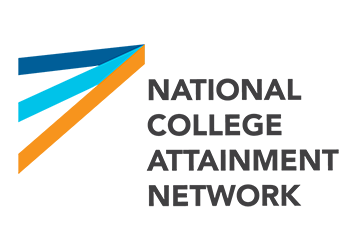 By Bill DeBaun, Director of Data and Strategic Initiatives, National College Attainment Network
By Bill DeBaun, Director of Data and Strategic Initiatives, National College Attainment Network
The National Student Clearinghouse recently announced that its “effective date” for the fall 2022 semester was November 18. This means that StudentTracker for High Schools subscribers will have new postsecondary outcomes data for their students in the next few weeks. That data is invaluable for understanding students’ postsecondary pathways and shaping postsecondary advising strategy.
If the words in the paragraph above seem foreign to you, let’s stop and rewind in the paragraph below. Did you catch all the above? Skip over the next paragraph or read it for a refresher.
The National Student Clearinghouse is a nonprofit organization that warehouses data covering about 98% of all the postsecondary enrollments nationally in any given year. They offer a subscription service to K-12 districts and schools ($595 per high school per year) that matches high schools’ senior classes with their postsecondary enrollment and completion data. Three times a year, the NSC sets “effective dates” where they have enough high school graduation and postsecondary enrollment data to generate new sets of reports. These reports are a collection of charts and spreadsheets that have both aggregated and student-level data. (Incidentally, education nonprofits who work with students can also access this data through a different subscription service, either Student Tracker for Outreach or Student Tracker for Educational Organizations.)
In the next few weeks, Student Tracker subscribers will receive an email when their reports are available for them to download from their FTP accounts. Once that notification goes out, it’s important to take a look and share with any internal personnel or external partners who collaborate with you on college and career readiness activities. Not sure where to start? Here are four things to look for in the data:
- Class of 2022 first fall enrollment: This is the fall 2022 semester effective date, so naturally most users will be interested in how their most recent graduating class fared. The class of 2021 experienced substantial first fall enrollment declines compared to class of 2020, so all eyes will be on the class of 2022 and whether these students will continue the enrollment declines.
- Previous classes’ persistence patterns: We know that the past few years haven’t just been disruptive for the classes of 2021 and 2022, they’ve been disruptive for, well, pretty much all of us. Using the stacked bar charts showing year-by-year outcomes in the aggregate report, it would be interesting to take a look and see if students from previous classes had an uptick in stopping out or if they were able to persist in and/or complete a postsecondary pathway.
- Top 25 institutions: The Student Tracker report comes with a .csv file showing the top 25 institutions to which students matriculated. Many districts and schools have fairly set matriculation patterns, but it’s always good to look for surprises here. The next level of analysis is to use the “student detail file” to break out students’ outcomes by institution. Are the institutions to which students are matriculating delivering good outcomes? If not, it might be time to consider a conversation with the institution, a change in college advising, or both.
- Outcomes by student demographics: When submitting a “graduates file” with the names and birth dates of students from each graduating class, the NSC offers the option to include students’ demographic characteristics. When provided, the NSC then sends back a report disaggregating outcomes by those characteristics. This is important because all student groups may not be getting the same outcomes as a graduating class is overall. Having this data available highlights gaps that can be addressed through practice and programming. Not submitting student demographics? Include them in your next graduate file upload, and you’ll see these charts in the next release.
Interested in the above but not a Student Tracker subscriber? It’s not too late to sign up! Once subscribed, you’ll be sent a report based on the November 18 effective date and then two more reports (mid-April, mid-August) in the next calendar year.
The effective use of data can help us improve students’ outcomes, and the NSC’s Student Tracker service is a handy tool to in the toolkit for examining students’ actual postsecondary pathways!
RELATED ARTICLES:
NCAN Guest Blog: Key Questions to Ask Before the School Year Starts (August 2022)
NCAN Guest Blog: Start Off the School Year Right with a Plan for Postsecondary Preparation (September 2022)
NCAN Guest Log: FAFSA Season is Open — Here’s How to Make Sure You Are Prepared (October 2022)
NCAN Guest Blog: Tackling Summer Melt in the Fall (November 2022)
